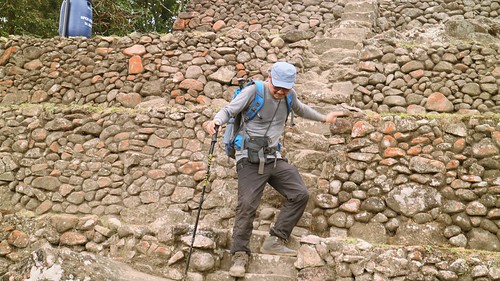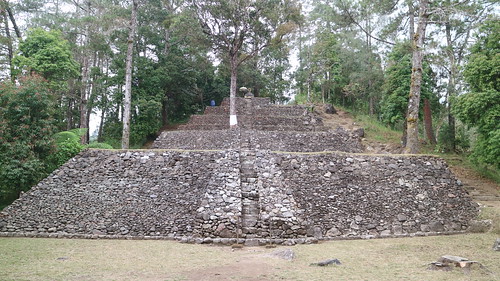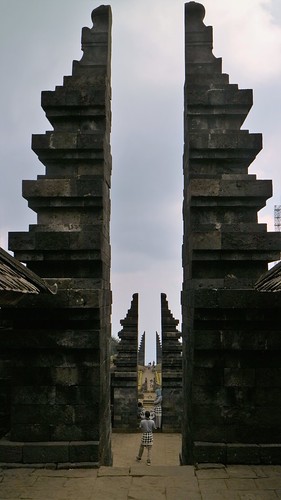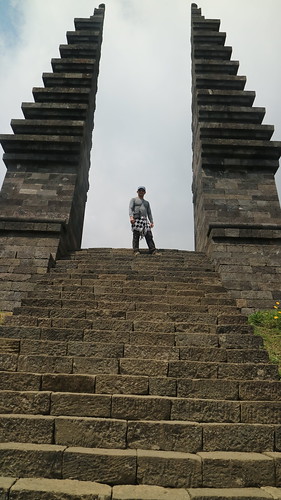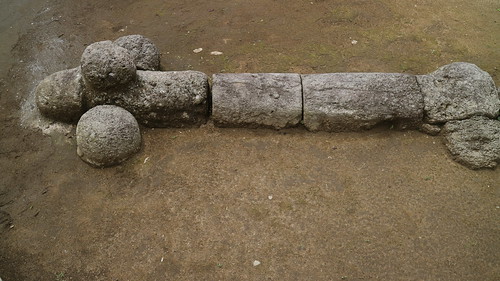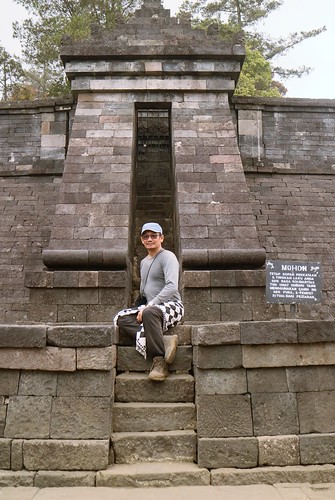The main reason for descending from the summit of Gunung Lawu via a different route is be able to enjoy a different scenery on the way down. It takes quite a bit longer than backtracking the same way, but there’s one more reason – Candi Kethek and Candi Ceto.
The decent from the summit of Gunung Lawu takes roughly 5 hours. My first encounter, after passing Pos 1, was actually not with ruins but with new Hindu temple still under construction.
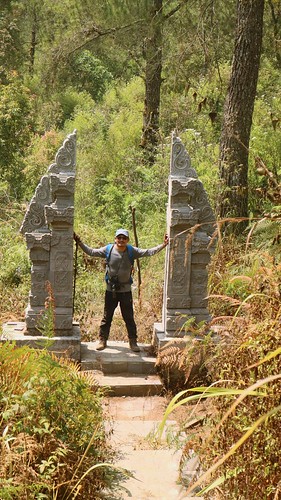
Not far from this new development, are the ruins of a 15th century temples – Candi Kethek. In better times, Kethek was a nominally Hindu temple building with four terraces. Breaking the tradition of Hindu temples facing east, Kethek faces west. Descending from Gunung Lawu, one would approach the temple from its top terrace – also believed to be its main building.
The terraces bear an uncanny resemblance to Mayan and Incan step pyramids. The wild speculation that they were indeed inspired by these cultures thousands of km across the oceans is probably without basis as similar structures have been found much closer to home in neighbouring animistic islands.
Each terrace was connected by stone steps, most of which were barely recognisable when discovered. On the flanks of the temple, there were footpaths which provided an alternative way to the top terrace.
Kethek in Javanese means monkey. It is believed that there used to be many monkeys in this area. Kethek is situated 300m northeast of its more famous and popular cousin, Candi Ceto. Both temples are located on the northwest slope of Mount Lawu.
Although the ruins of Kethek were discovered in 1842, excavation did not begin until as recent as 2005 by the Central Java Archaeological Heritage Preservation Agency in collaboration with the Department of Archeology of Gadjah Mada University (Yogyakarta). The only evidence of it being a Hindu temple were found in the flat top tortoise altars. The existence of images of Samudra manthana shows the function of the Kethek Temple as a place of prayer to cleanse and free someone from error or sin. Research is still ongoing.
The Kethek I saw was only nominally restored with a great amount of imagination. Most of the bricks were so broken that the structure did not even look restorable. A short walk from Candi Kethek, is Candi Ceto base camp. This is where climbers would register to climb Gunung Lawu via this route. The entrances to base camp and that to the temple are separate, so climbers are not forced to enter the temple if they don’t want to.
Candi Ceto is located on the western slope of Gunung Lawu some 1495 m above sea level on the border between Central and East Java provinces, believed to have been constructed by one of the last Majapahit rulers towards the end of the 15th century.
By then, the sun was setting on not just Majapahit but Hinduism. Along with the decline of Hinduism, Javanese culture and architecture diverged from their original, Indian-influenced forms. Like Candi Sukuh and Candi Kethek, Ceto is a significant landmark in Javanese history just before the island’s courts were completely converted to Islam in the 16th century.
When first discovered, some 14 terraces were identifiable. Like Candi Sukuh and Candi Kethek in the neighbourhood, the terraces rose from west to east. Restoration of Candi Ceto was started in the late 1970s and supervised entirely by Sudjono Humardani, President Suharto’s personal assistant. The structure appears to be very well-restored, but Sudjono’s actions have been criticised as adulteration as Ceto has been reconstructed rather than restored. The Candi Bentar or archways and the wooden housings for phallic worship were all newly constructed.
Candi Ceto consists of 9 terraces. The lower terraces contain statues of demons and deities. The star attraction is on the 7th terrace. There is a horizontal stone setting on the ground that depicts a giant turtle, Surya Majapahit (presumably a symbol of Majapahit), and a 2m long stone phallus symbol embedded with greatly exaggerated ball bearings. This practice of inserting ornaments into one’s genitals is still practised today.
Turtles are a symbol of the creation of the universe while the penis is a symbol of human creation. The image is best viewed from the top where it resembles a bat. At the next level, you can find stone reliefs on two adjacent panels that contain images from the Sudamala story, such as that found in Sukuh Temple.
The worship of the phallus statues here symbolizes gratitude and the hope for abundance and fertility (harvests and livestock farming) within the community. The last level (9th) is the highest level as a place for prayer. Unlike the rectangular lower terraces, the top terrace is a cube.
At the top, behind the Ceto complex, there is a chamber which which was once used by devotees to wash and cleanse themselves before carrying out sacred rituals.
Candi Ceto may not be explicitly sexual as Candi Sukuh, but while the wow factor is somewhat toned down here, it’s paradise for the Instagrammer. Hopefully, they don’t go away without learning anything.



